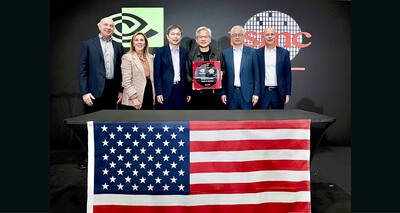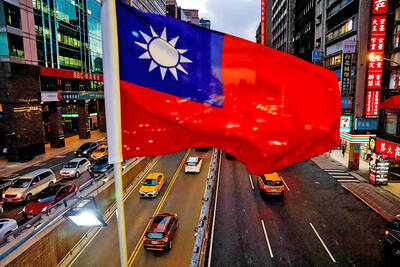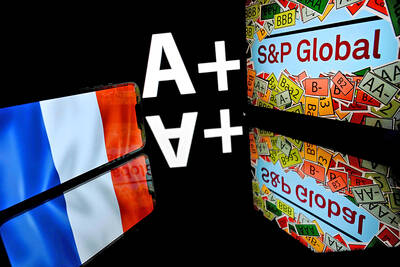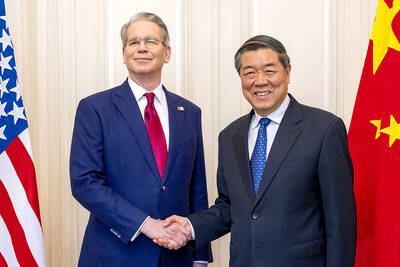Powertech Technology Inc (PTI, 力成), which provides packaging and testing services for memorychip makers, has reached an agreement with Nepes Corp to acquire the South Korean firm’s Singaporean unit.
The Singapore-based Nepes Pte Ltd has the capacity to turn out 15,000 units of 300mm (12-inch) wafer bumping and wafer-level packaging a month, and counts US chipmaker Broadcom Corp as one of its major customers.
The deal is part of Powertech’s efforts to bolster its capacity in advanced logic integrated circuit (IC) packaging to complement the company’s plan to raise its capital expenditure to between NT$6 billion and NT$7 billion (US$198.3 million and US$231.3 million) this year from NT$5 billion.
The increase is to finance new investments on NAND flash and wafer bumping, the company said in a statement on Tuesday, without disclosing the price it will pay to acquire the Singaporean unit.
“With Nepes Pte’s well-established turnkey solution and its strategic location, this acquisition will elevate Powertech Technology into a new stage of growth,” the Hukou (湖口), Hsinchu County-based company said in the statement.
Powertech said Nepes Pte is the only 12-inch wafer bumping company in the Southeast Asian city-state that can efficiently provide customers with a complete cost and time turnkey solution.
In addition, its strategic location in Singapore will help Powertech better support its customers in the region, chairman Tsai Du-kung (蔡篤恭) said in the statement.
The Nepes deal follows Powertech’s purchase of struggling US-based OCZ Technology Group’s solid-state drive (SSD) packaging operations in Taoyuan County’s Jhongli City (中壢) earlier this year.
That acquisition was made as Powertech began carrying out SSD packaging for client Toshiba Corp.
Powertech, whose customers also include Kingston Technology Co of the US, on Tuesday reported financial results for the first quarter that exceeded expectations, with its net income rising 110.4 percent from the previous quarter to NT$597 million, but declining 4.6 percent from a year earlier, with earnings per share of NT$0.78, the company said on its Web site.
Its consolidated revenue last quarter totaled NT$9.23 billion, down 3.8 percent quarterly, but up 0.2 percent annually, while its gross margin stood at 14.1 percent.
Powertech said the outlook for this quarter looks positive, with strong demand expected for commodity and mobile DRAM, as well as for NAND flash, logic IC and wafer bumping.
The firm’s management has forecast sales to rise by a higher-than-expected 10 percent sequentially, with its gross margin also set to improve further, the report said.
SinoPac Securities Investment Service Co (永豐投顧) said in a note on Wednesday that stable margin improvement and new business opportunities could push Powetech’s revenue up 10 percent sequentially to NT$10.15 billion this quarter and raise its net income 23.1 percent to NT$740 million, which would equal earnings per share of NT$0.94.
Powertech has a “buy” rating at SinoPac and a new target share price of NT$55, which represents a 13-percent upside from its closing price of NT$48.85 on Wednesday.

Jensen Huang (黃仁勳), founder and CEO of US-based artificial intelligence chip designer Nvidia Corp and Taiwan Semiconductor Manufacturing Co (TSMC, 台積電) on Friday celebrated the first Nvidia Blackwell wafer produced on US soil. Huang visited TSMC’s advanced wafer fab in the US state of Arizona and joined the Taiwanese chipmaker’s executives to witness the efforts to “build the infrastructure that powers the world’s AI factories, right here in America,” Nvidia said in a statement. At the event, Huang joined Y.L. Wang (王英郎), vice president of operations at TSMC, in signing their names on the Blackwell wafer to

AI BOOST: Although Taiwan’s reliance on Chinese rare earth elements is limited, it could face indirect impacts from supply issues and price volatility, an economist said DBS Bank Ltd (星展銀行) has sharply raised its forecast for Taiwan’s economic growth this year to 5.6 percent, citing stronger-than-expected exports and investment linked to artificial intelligence (AI), as it said that the current momentum could peak soon. The acceleration of the global AI race has fueled a surge in Taiwan’s AI-related capital spending and exports of information and communications technology (ICT) products, which have been key drivers of growth this year. “We have revised our GDP forecast for Taiwan upward to 5.6 percent from 4 percent, an upgrade that mainly reflects stronger-than-expected AI-related exports and investment in the third

France cannot afford to ignore the third credit-rating reduction in less than a year, French Minister of Finance Roland Lescure said. “Three agencies have downgraded us and we can’t ignore this cloud,” he told Franceinfo on Saturday, speaking just hours after S&P lowered his country’s credit rating to “A+” from “AA-” in an unscheduled move. “Fundamentally, it’s an additional cloud to a weather forecast that was already pretty gray. It’s a call for lucidity and responsibility,” he said, adding that this is “a call to be serious.” The credit assessor’s move means France has lost its double-A rating at two of the

RARE EARTHS: The call between the US Treasury Secretary and his Chinese counterpart came as Washington sought to rally G7 partners in response to China’s export controls China and the US on Saturday agreed to conduct another round of trade negotiations in the coming week, as the world’s two biggest economies seek to avoid another damaging tit-for-tat tariff battle. Beijing last week announced sweeping controls on the critical rare earths industry, prompting US President Donald Trump to threaten 100 percent tariffs on imports from China in retaliation. Trump had also threatened to cancel his expected meeting with Chinese President Xi Jinping (習近平) in South Korea later this month on the sidelines of the APEC summit. In the latest indication of efforts to resolve their dispute, Chinese state media reported that